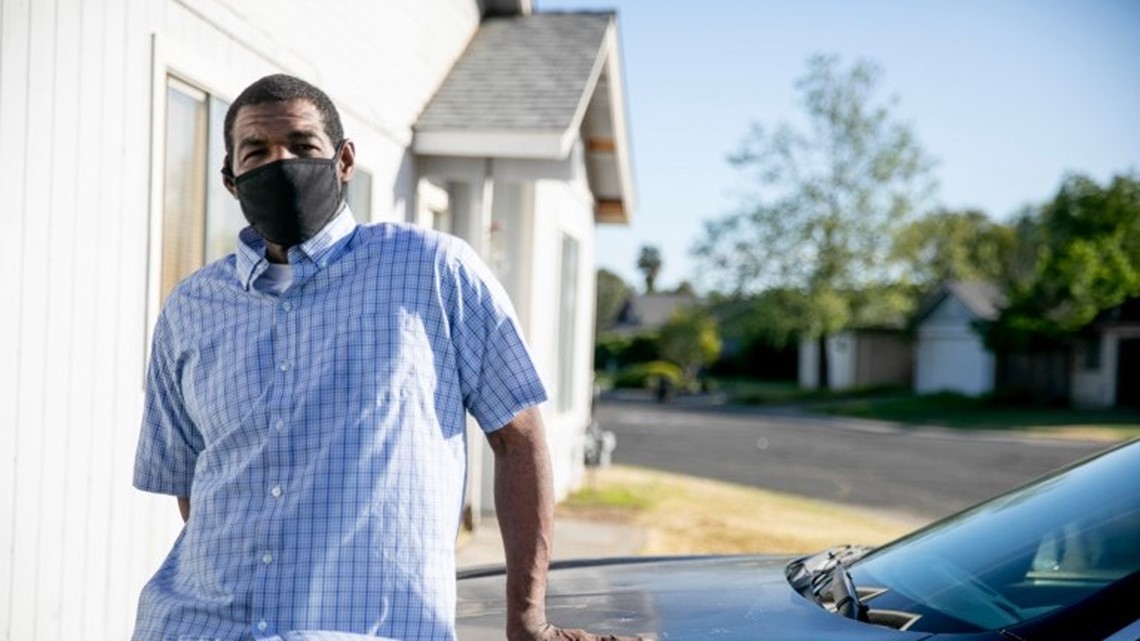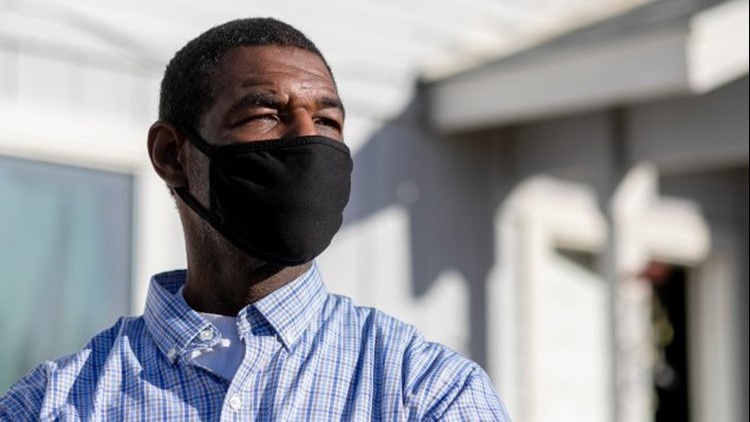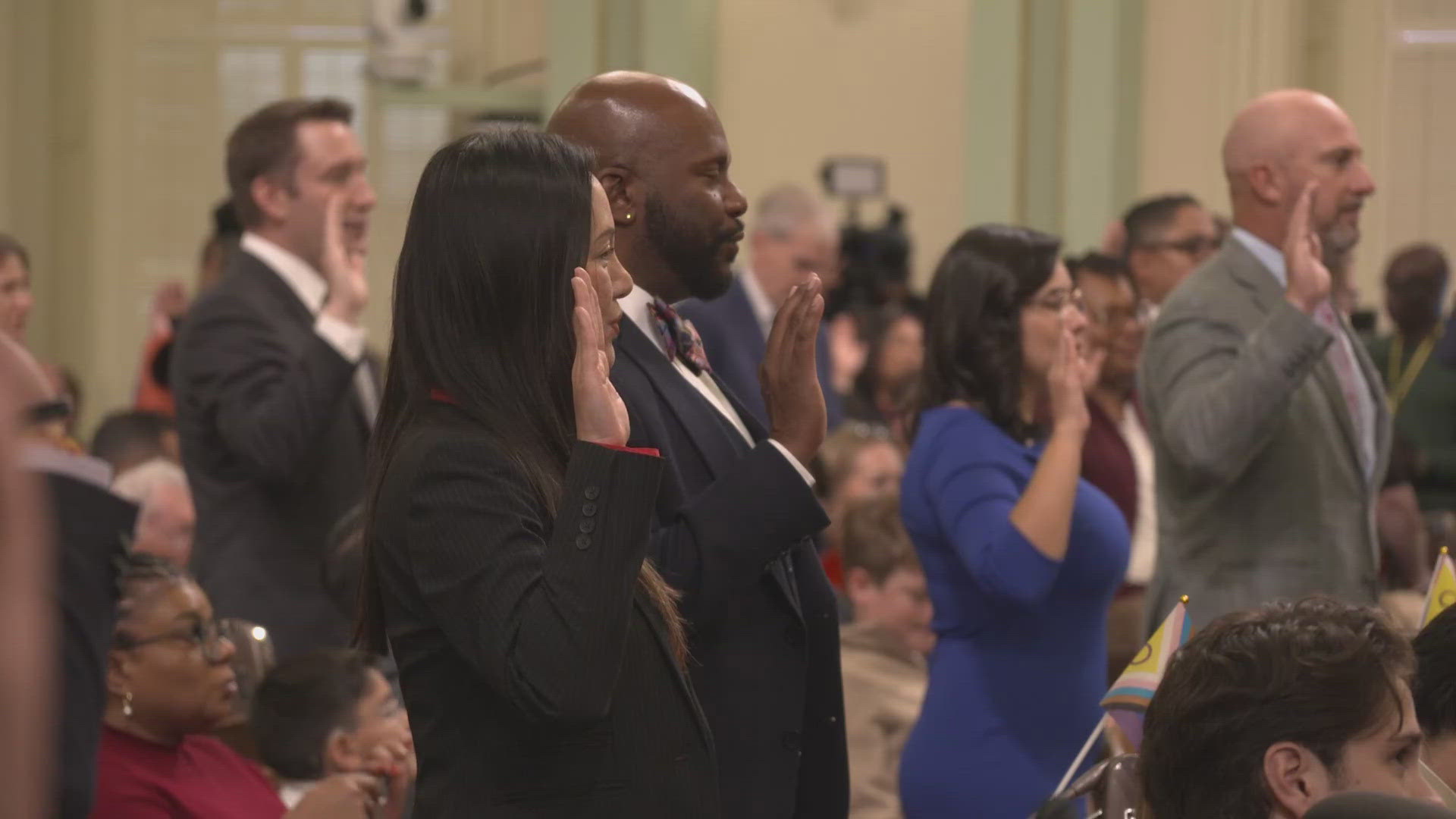CALIFORNIA, USA — This story was originally published by CalMatters. Lea este artículo en español.
Half of Stacy Estes’ pay disappears every month before it hits his bank account. Each check is about $500 lighter than it should be, intercepted in the name of child support — which he wouldn’t have a problem with, if it were going to his kids.
Instead, only $225 goes to his children. The rest is garnished to repay government debt he began accruing more than two decades ago when he first got behind on child support payments.
The 53-year-old Estes owes about $47,000 in child support debt, most of which is compounded by years of government-imposed interest, according to financial records reviewed by The Salinas Californian and CalMatters.
Federal data shows California is keeping an unusually high portion of the child support payments — more than 3½ times the national average, paying itself first at the expense of the very children it’s supposed to be looking out for. That’s because California is charging families millions of dollars in interest on past-due child support payments while penalizing low-income parents who fall behind, making it nearly impossible for many to land employment, support their children and pay off the debt, according to state records and expert analysis.
Experts argue these laws are arcane and racist, penalizing Black and brown fathers through predatory-like interest rates and driver’s license suspensions. They push parents struggling to make ends meet into even more precarious circumstances since the average noncustodial parent makes less than $15,000 a year but owes $39,000 to both their children and the government.
In fact, the state’s own findings suggest nearly all of this debt is uncollectible because it’s owed by people with low incomes, people out of state or the debt is simply too old. Advocates urge lawmakers to erase uncollectible debt entirely, and guarantee that all child support paid goes straight to the children.
Crafted through a series of federal legislation in the ‘70s and ‘80s, the laws that govern public child support have impacted parents across the nation for decades. Based on the notion that people who tap public assistance have an obligation to repay the government, parents who don’t keep up with payments face the same federally mandated penalties, like suspension of driver’s licenses. If states don’t recoup the money from parents, they become responsible for repaying the government aid out of their own coffers.
Just a few states pass through 100% of monthly child support payments to families, but only Colorado repays the federal government for aid to families out of its own pocket, with Washington waiving a small portion.
“This is a very old policy,” said Vicki Turetsky, who served as commissioner of the U.S. Office of Child Support Enforcement during the Obama administration. “It dates back to poor law: the idea that people who get public benefits from the government ought to pay them back. It’s a very old way of thinking about assistance to families.”
While the federal Office of Child Support Enforcement shows California is average in the amount of child support it collects, Turetsky calculated the state retained 14% of total collections, compared to a national average of 3.8%, meaning it retains a disproportionately large share as state revenue.
Only the District of Columbia retains more.
“California is an outlier in the proportion of support it retains to reimburse cash assistance,” she said.
Turetsky said this was because California has a larger cash assistance caseload, less restrictive eligibility rules for cash assistance, and it passes less support through to families than many states. State officials said they do not have discretion over how much child support collections it retains for recoupment of aid, and pegged the primary reason for the higher rate to a high welfare caseload in California. More than a third of residents are living in or near poverty.
California child support administrators agree that things need to change, but say they have limited power to make reforms. The most meaningful alterations that could provide parents relief — ditching high interest rates and suspension of driver’s licenses — are up to state and federal legislators, not the agency, said David Kilgore, director of California’s Department of Child Support Services. And besides, he added, sometimes those penalties are the only way to convince parents to come in and talk to them.
“I can see the argument on both sides,” Kilgore said. “This is a debt folks need to pay off.”
It starts with public assistance.
When custodial parents — in most cases, mothers — apply for government aid such as CalWorks, they must sign away their rights to child support they are already receiving to the government in repayment. That money, once considered private funds between two individuals, is now reclassified as public child support, collectible by the state to repay their aid.
The state continues to pass only a portion of the now-public child support to the mother and siphons off the rest, which advocates say is often a nasty surprise to both parents.
“Parents who have their child support taken by the state feel like they have to choose between supporting their children and paying their child support,” said Heather Hahn, a researcher with the Urban Institute.
While the number of California parents who owe child support wasn’t available, the outstanding balance is staggering. According to the Department of Child Support Services, California parents owe $11.6 billion in child support to their families and another $6.8 billion to the government.
But last year, state calculated that more than $11 billion of the total child support owed was old debt.
California typically collects about $2.5 billion total from parents annually, one of the largest amounts by state, but proportionate to its population.
In 2020, about $2 billion of those funds went to custodial parents. Thanks to various pandemic relief efforts, the state intercepted not just parents’ paychecks, but their unemployment and stimulus checks too, driving the collected amount up. As a result, the state kept about $430 million of the $2.7 billion it collected in child support. Of that, kept $207 million for state coffers and divvied up the rest among the federal government, counties and other jurisdictions. Federal law states half the money intercepted or garnished goes to the federal government, another 47.5% goes to the state, and 2.5% to the county the child lives in.
If noncustodial parents — in most cases, fathers — get behind on those child support payments in California, that debt is subject to a 10% interest fee, the second-highest rate in the nation according to the National Conference of State Legislatures. That racks up quickly, parents say.
The nonpayment penalties parents face are steep: The state can suspend driver’s licenses just 30 days after falling behind on payments, to start.
Director Kilgore said in many cases, suspending parents’ driver’s licenses can sometimes be the only tool his agency has to get parents to work with them so they begin to pay their child support back.
However, parent advocates add that suspending licenses as a get-tough policy has only made circumstances worse for struggling fathers.
“Licenses are essential in this economy,” said Mike Herald, director of policy advocacy for the Western Center on Law and Poverty, which advocates for the poor. “This has a really fatal flaw; we think we’re going to somehow get money out of people we’ve driven underground. How will this increase collections?”
In recent years, California has taken small steps to give parents relief.
In 2017, a report out of the San Francisco Treasurer’s Office estimated that 70% of public child support debt in California was owed to the government, not to families. That figure has since dropped to 40% after a host of changes were implemented, such as the Compromise of Arrears Program, a debt reduction program that lets noncustodial parents discharge their full debt in exchange for a lump sum up front. For eligible parents, the program, which is still available, can be a lifeline.
However, advocates say the changes aren’t drastic enough. They urge lawmakers to erase uncollectible debt entirely, and guarantee that all child support paid goes straight to the children.
Gov. Gavin Newsom last year embraced increasing the amount of funds passed through to families in his budget, allowing families with one child on public assistance to receive $100 a month (up from $50) and families with two or more children to receive $200 a month of the child support.
But he vetoed Democratic Assemblymember Reggie Jones-Sawyer’s AB 1092, which would have ended the state’s practice of charging 10% interest on public child support debt. Newsom’s veto message read, in part, “I cannot support this bill as it would lead to an estimated revenue loss of millions of dollars.”
The state is running a surplus of $16.7 billion.
Child support debt has particularly impacted Black and Hispanic/Latino people. U.S. census data shows they make up 47% of the state’s population, but about 60% of parents caught up in this cycle. Black people in particular are overrepresented, at 6.5% of the population but about 18% of parents who owe outstanding public child support debt.
Parent advocates say this rule perpetuates the racist myth of the welfare queen and the deadbeat dad, separating Black and brown families.
“The narrative…is that it is child support, and it is not,” said Mia Birdsong, author and Senior Fellow at the Economic Security Project. “It is the government extracting resources from Black fathers. It’s meant to cover overhead, but it’s punishment.”
It took years of making payments before Estes realized all the money being deducted from his paycheck wasn’t going to his kids, but rather to the government. As he fell behind on his child support payments, his debt ballooned under the state’s interest rates and he began to suffer additional penalties.


His driver’s license has been suspended at least three times.
Each suspension made it that much harder to keep up with the payments he had fallen behind on, Estes said. He resorted to working under the table to supplement his income: driving DoorDash under his fiancée’s name or taking jobs that pay cash. Together, Estes and his fiancée bring in about $40,000 a year, but he lost his job as concert security during the pandemic, making things even tighter.
Even when his job comes back, he said, he won’t earn enough to wiggle out from under the crush of debt.
“How do you live on half of your makings, how do you even get a house or anything like that?” Estes said. “What about gas, electric, food? What about just living?”
Jhumpa Bhattacharya, a vice president at the Insight Center for Community Economic Development, a nonprofit dedicated to building economic opportunity in vulnerable communities, said she’d like to see the state send all child support payments to kids and help noncustodial parents find ways to meet their payments instead of meting out punishment when they can’t.
“We’ve decimated all our social welfare systems and made them dehumanizing and demoralizing,” she said. “Black people have a tenuous relationship to the economy. They aren’t hired, or are shoved into low-paying, low-dignity jobs, so when they start to access this system, we punish them for it.”
But, she said, federal legislators need to be the ones to tackle the aid payback requirement.
“Why,” Bhattacharya asked, “should you have to pay back the government for helping you?”
In 2020, Maryland Democratic Sen. Chris Van Hollen introduced the Strengthening Families for Success Act, which would have ended recovery of cash aid for good. His measure died in committee and would need to be reintroduced. Messages to Van Hollen’s D.C. office were not returned.
Instead of being a “wedge that pushes families apart,” Kilgore, California’s child support services director, says, he’d like to see federal changes that make it more of a pick-and-choose program. He believes there’s an opportunity for families to sign up for DCSS services on an as-needed basis, utilizing it just as a way to get child support payments without putting their ex in the way of potential license suspensions or even jail time.
“We are, right now, an all-or-nothing program and we’d like to be more flexible and let people choose which services they’d like to implement,” Kilgore said.
The Newsom administration is looking at other ways to reduce the burden. The Compromise of Arrears Program is undergoing a revamp this spring, Kilgore said, making it easier for parents to tap the debt dischargement program. Rather than asking for 10% of the total debt, it will be based on their wages.
At the county level, directors would like to see certain changes made, as well.
“I wish we did not collect interest,” said Santa Clara County Department of Child Support Services Director Ignacio J. Guerrero. “It feels more punitive than anything else.”
At least one county has led in removing such stigma. The Financial Justice Project in the San Francisco Treasurer’s Office launched a pilot program in recent years for 32 fathers saddled with prohibitive amounts of child support debt. Some had lost their driver’s licenses, jobs, and homes as a result.
“We were creating huge barriers in people’s lives,” said the project’s director, Anne Stuhldreher. “If you can’t pay that government debt, a lot of really steep consequences set in.”
Stuhldreher’s office wanted to see what would happen when noncustodial parents no longer owed that debt. The project raised enough to pay down 10% of these fathers’ child support debt, and utilizing the state’s debt reduction program, discharged the other 90%, leaving them debt-free.
After following these fathers for a year, Stuhldreher said they found many of their lives had improved in measurable ways. Fathers got housing, started making bigger, more consistent child support payments, and their credit scores rose. Their relationships with their children and their exes improved, too.
A control group of fathers in similar circumstances saw no improvements.
Estes said he has resigned himself to never fully paying off this debt. His youngest is 16, his oldest, nearly 30.
“There’s nothing I can do about it,” he said, from behind the wheel one evening, making DoorDash deliveries. He hit the turn signal; a steady tock-tock-tock beat. “I’ve beaten myself up over, you know, I can’t provide adequately. But my kids are older now, they understand.”
For the record, this story has been corrected to add that state lawmakers also share authority over penalties for falling behind on child support debt payments.
The Mercury News reporter Laurence Du Sault and CalMatters reporter Jackie Botts contributed to this story. This article is part of the California Divide, a collaboration among newsrooms examining income inequality and economic survival in California.
CALmatters.org is a nonprofit, nonpartisan media venture explaining California policies and politics



